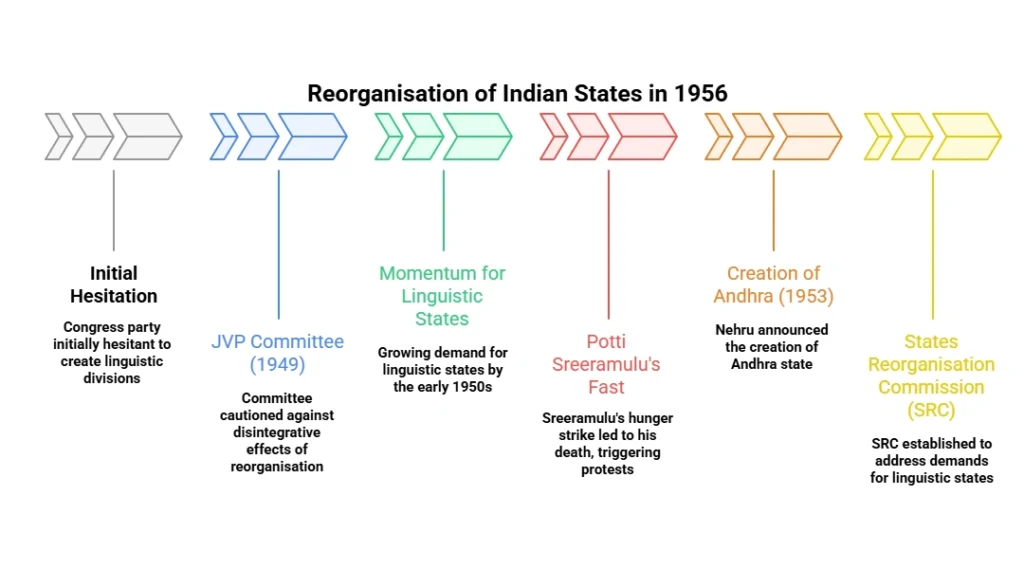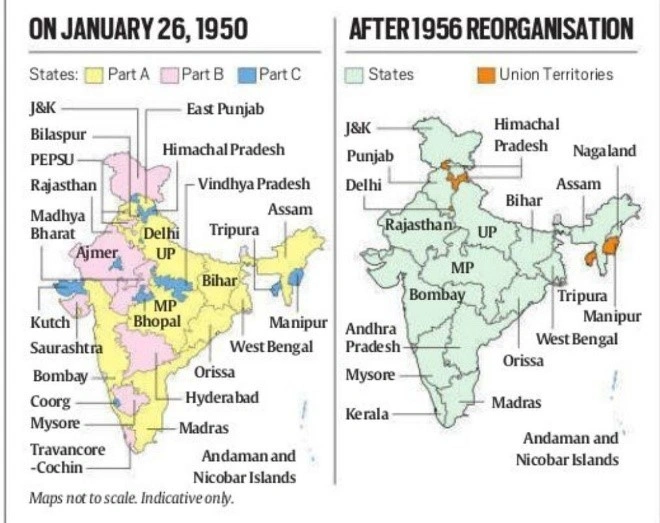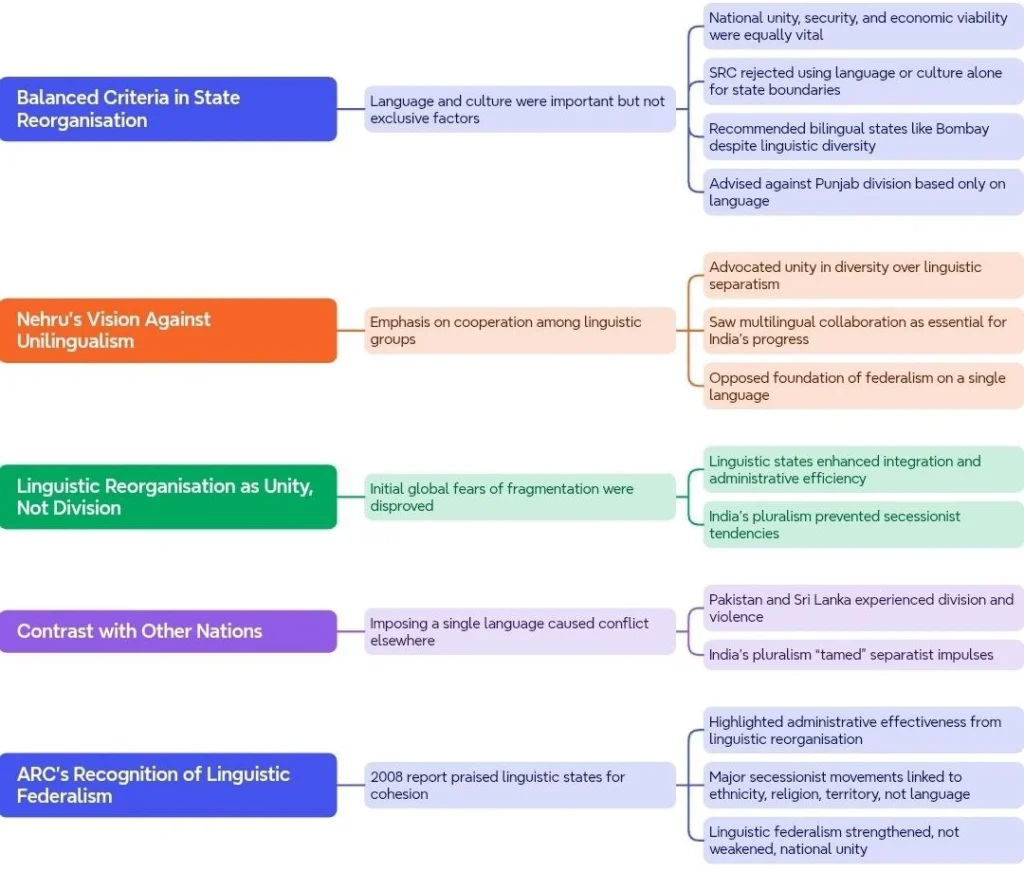Paper: GS – II, Subject: Polity, Topic: Federalism, Issue: The States Reorganisation Act of 1956.
Context:
Tamil Nadu Governor R.N. Ravi recently stirred controversy by claiming that the linguistic reorganisation of Indian states, initiated within a decade of Independence, led to large sections of people becoming “second-class citizens.” Speaking at an event in Gandhinagar, he argued that this move weakened national unity.
Key Takeaways:
India’s Political Geography Before Linguistic Reorganisation:
- At the time of Independence in 1947, India inherited a complex administrative setup shaped by British colonial rule.
- The British governed India through two parallel systems direct control in provinces and indirect control over 565 princely states.
- The boundaries drawn were dictated largely by administrative convenience rather than cultural or linguistic coherence.
Four-Part Division under the 1950 Constitution:
- When the Constitution came into effect on January 26, 1950, India was described as a “Union of States,” comprising 28 states grouped into four categories:
- Part A States: These included nine former British governor’s provinces like Bombay, Madras, and Uttar Pradesh, each with an elected legislature and a governor.
- Part B States: Comprising eight former princely states or their groupings, these were governed by an elected legislature and a rajpramukh (a governor-like figure), and included states like Hyderabad, Jammu & Kashmir, and Rajasthan.
- Part C States: Ten territories including both former Chief Commissioners’ provinces and some princely states were placed under the direct control of the President through a Chief Commissioner. Examples: Delhi, Himachal Pradesh, and Manipur.
- Part D State: The sole territory under this category was the Andaman and Nicobar Islands, administered by a Lieutenant Governor appointed by the President.

The 1956 Reorganisation:
- In its report submitted on September 30, 1955, the SRC acknowledged that the growing importance of regional languages and political awareness made linguistic reorganisation inevitable.
- Following the SRC’s recommendations, the States Reorganisation Act of 1956 was enacted.
- It redrew India’s political map, reducing the existing divisions and reorganising the country into 14 states and six Union Territories, primarily along linguistic lines marking a turning point in India’s federal structure.

Language Was Not the Sole Criterion for State Reorganisation:

Conclusion:
While Governor Ravi’s criticisms of linguistic state divisions suggest a viewpoint that they create second-class citizens, a historical and contextual analysis reveals that linguistic recognition has been integral to India’s unity and administrative coherence.
- Acknowledging linguistic diversity is seen not only as a means to empower regional identities but also as a foundational pillar that supports the overall integrity of the Indian nation.
La Excellence IAS Academy, the best IAS coaching in Hyderabad, known for delivering quality content and conceptual clarity for UPSC 2025 preparation.
FOLLOW US ON:
◉ YouTube : https://www.youtube.com/@CivilsPrepTeam
◉ Facebook: https://www.facebook.com/LaExcellenceIAS
◉ Instagram: https://www.instagram.com/laexcellenceiasacademy/
GET IN TOUCH:
Contact us at info@laex.in, https://laex.in/contact-us/
or Call us @ +91 9052 29 2929, +91 9052 99 2929, +91 9154 24 2140
OUR BRANCHES:
Head Office: H No: 1-10-225A, Beside AEVA Fertility Center, Ashok Nagar Extension, VV Giri Nagar, Ashok Nagar, Hyderabad, 500020
Madhapur: Flat no: 301, survey no 58-60, Guttala begumpet Madhapur metro pillar: 1524, Rangareddy Hyderabad, Telangana 500081
Bangalore: Plot No: 99, 2nd floor, 80 Feet Road, Beside Poorvika Mobiles, Chandra Layout, Attiguppe, Near Vijaya Nagara, Bengaluru, 560040

